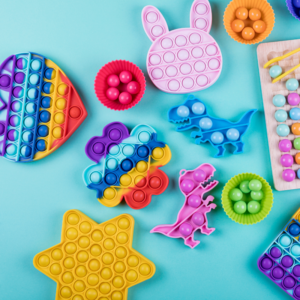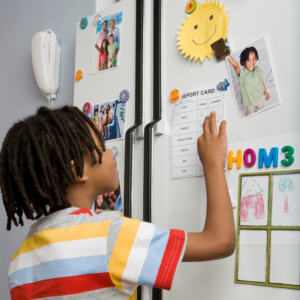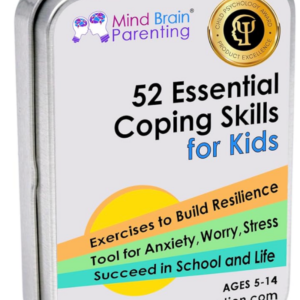In my journey through education and as a parent, I’ve come to understand that each child is unique, especially those who are neurodiverse. Neurodiversity is not just a term; it's an essential acknowledgment of the wide range of ways our brains can function and process information. It encompasses conditions such as autism, ADHD, dyslexia, and more, each existing on a spectrum that highlights the beautiful variety of human cognition. From my perspective, recognizing this diversity is key to creating an inclusive school environment where every child can thrive.
Neurodiverse children often face challenges in traditional educational settings. Imagine the sound of a school bell ringing—while some might be excited, others can feel overwhelmed by the sheer volume of noise and bustling activity. I've seen children struggle with sensory sensitivities, where the bright fluorescent lights and loud classroom chatter can lead to anxiety that makes learning seem impossible. Social integration, too, can be a hurdle. Many neurodiverse kids find social interactions puzzling, leading to feelings of isolation or frustration. The complexities of structured routines, which are designed to help, can sometimes add additional stress instead, as these children may perceive them as restrictive rather than supportive.
These challenges highlight a crucial need: individualized approaches. One size does not fit all when it comes to education. I’ve often shared stories with fellow parents and educators about the power of tailored strategies that take into account each child's unique needs. In my experience, having a customized plan amplifies a child's comfort and boosts their performance. I recall the time I visited a school that incorporate sensory breaks into every class. Allowing neurodiverse students to decompress, which led to remarkable improvements in engagement and learning. That's the kind of change we need—proactive and personalized methods that cater to the gifts and challenges of neurodiverse learners.
With such clear benefits in mind, we must keep in mind that awareness is just the first step. The real magic happens when we actively implement strategies that enhance both emotional and academic success. For example, I’ve found that encouraging children to express their feelings helps them navigate social situations more effectively. I remember one mother who taught her son to use “I feel” statements, which dramatically improved his interactions with peers. It was a simple tool, but it made all the difference.
Furthermore, we need to listen to our children’s voices. Incorporating their input into their educational plans can foster a sense of ownership over their learning journey. Questions like “What helps you feel calm when things get overwhelming?” can open up dialogues that guide us toward effective solutions tailored to their specific needs.
Through continual learning and adaptation, I’ve witnessed firsthand how empowering children to articulate their needs leads to significant improvements in their classroom experiences. Just imagine how transformative it would be if every school prioritized understanding neurodiversity and implemented individualized teaching methods. With a proactive approach, we can create educational spaces that celebrate our differences rather than minimizing them.
There's immense power in fostering an environment where neurodiverse children are valued for their unique contributions. I believe that if we listen, adjust, and encourage, we not only help them navigate their educational paths more successfully but also pave the way for a more inclusive society. This journey might not always be easy, but the rewards—witnessing our children thrive—are more than worth the effort.

Transitioning back to school can feel hard for many neurodiverse kids, and I’ve come to realize that preparation is the bridge that makes that leap a little easier. Throughout my experience, I discovered that a few essential strategies not only smooth the path for my child but also instill a sense of confidence and readiness for the new school year. Let me take you through some of these strategies that I found invaluable.
One of the most effective ways I found to ease into the school routine is by gradually introducing a morning schedule a few weeks in advance. This soft start allows my child to adapt without the abruptness that often comes with the first day of school. I can clearly remember the first time we set a wake-up time and stuck to it; the smile on their face when they realized that they could prepare themselves had a profound impact on our mornings.
Using visual schedules has been a game changer. We sat together and created a colorful chart depicting our morning routine—waking up, brushing teeth, getting dressed, and having breakfast. My child learned to identify each activity visually. Now, rather than hearing, "It's time to get ready!" and feeling overwhelmed, they can look at the schedule, know what’s next, and feel empowered. I still catch myself beaming with pride every time we successfully follow it!
As every parent knows, children have unique sensory preferences, and with neurodiverse kids, addressing these needs can drastically improve their comfort and focus. I took the time to explore various sensory-friendly tools and clothing. I remember the first time my child tried on a soft-fabric shirt, specifically designed for sensory sensitivities. They looked at me with such joy, saying it felt like, “a gentle hug.” Now, finding clothing that showcases this level of comfort is a regular part of our shopping trips.
When we talk about sensory tools; fidget toys can make a world of difference in managing anxiety throughout the school day. We’ve experimented with different types—stress balls, tactile fidgets, and even sensory bracelets. Having a selection at their disposal has transformed potentially stressful moments into opportunities for relief and calming. Most importantly, we created a small sensory kit that they can carry to school to help them navigate challenging situations. This simple incorporation of sensory-friendly items can truly be a game changer.

Social interactions can be particularly hard for neurodiverse children, and I’ve found that practicing these interactions through role-play significantly boosts their confidence. We set aside some time at home where we engage in various school scenarios—asking a friend to play, approaching a teacher with questions, or navigating lunchroom interactions. I often take on the roles of peers or teachers, and I can’t express how enlightening it is to witness my child develop strategies for these encounters.
These role-playing sessions not only alleviate some of the anxiety surrounding social interactions but also provide my child with the tools to respond effectively in real-life situations. One afternoon, after practicing a scenario, my child eagerly shared that they felt ready to approach a classmate they admired. Sure enough, that moment came, and to my delight, they handled it seamlessly. It’s those little victories that accumulate into a tremendous sense of growth and readiness.
In our journey of preparing for the school year, I’ve learned that every step, no matter how small, contributes to confidence and comfort in our neurodiverse children. As I have watched my child transform through these strategies, I feel a swell of hope for their future, filled with endless possibilities. Implementing these essential preparation strategies is not merely about getting ready for school; it’s about nurturing resilience, self-worth, and an abiding sense of belonging. With love, care, and preparation, we truly can help our children thrive during their back-to-school experience.

In the the busy and chaos of everyday life, it's easy to feel overwhelmed. I remember those mornings where chaos reigned supreme—backpacks jumbled, lost shoes, and breakfast left untouched. I found that embracing organizational tools not only transformed my daily routine but also fostered a more peaceful home environment. These tools are more than just items on a shelf; they are the scaffolding that supports our busy lives, creating a clear path to success.
One tool that I've come to rely on is the Joyful Family Planner. This planner did not just pop up in my life—it became a trusted partner in tackling our family's whirlwind schedule. It’s thoughtfully designed, featuring daily calendars, reminders, and checklists that make planning a breeze. What makes it stand out is how it tailors itself to the unique needs of neurodiverse children. For example, the visual layouts help my kids grasp daily expectations, reducing anxiety about what lies ahead. The mere act of checking off a completed task can ignite a sense of accomplishment that is incredibly uplifting.
"A strong support system in the form of organizational tools can significantly enhance a child's ability to manage anxiety." - Author Unknown
But let’s dive deeper into what makes tools like the Joyful Family Planner invaluable. Picture a busy weekday morning where each family member has their tasks lined up clearly. The planner provides a snapshot of everyone’s responsibilities, minimizing overlaps and confusion. Additionally, its color-coded sections help in distinguishing subjects or family activities, making it visually engaging for the kids. In our home, that has been a game-changer.
Aside from the Joyful Family Planner, there are numerous other organizational tools that can ease the chaos that often accompanies our busy lives. For instance, color-coded folders not only keep schoolwork organized but also serve as a visual cue for my kids. They know exactly where to retrieve their assignments, making transitions from home to school smoother. Then there’s the trusty label maker; it adds a personal touch and helps reinforce responsibility. When kids can see their name on their belongings, it fosters ownership. They take pride in their items, enhancing their engagement.
In the digital realm, there are fantastic apps created specifically for task management. I’ve been using an app that allows my kids to set reminders for their homework and daily chores. The thrill of checking off completed tasks gives them a sense of accomplishment, and for me? Well, it reduces the number of reminders I have to give—a win-win situation!
As we embrace these organizational tools, I can’t help but reflect on the broader impact they have on our lives. Not only do they facilitate smooth transitions from one activity to another, but they also pave the way for open conversations about emotions and challenges. Having routines in place allows my children to discuss their feelings around tasks and activities openly. When they know what to expect, it diminishes anxiety and helps them articulate their experiences.
In my quest to create a more organized and fulfilling family life, I've tried alot of resources that could help us all. For instance, incorporating visual schedules has proven invaluable. Visual schedules break down tasks into manageable parts, allowing children to understand what is expected of them throughout the day.
Another resource worth mentioning is the concept of sensory breaks. These short intermissions between tasks have been incredibly effective. When I notice my kids getting restless or unfocused, we take a sensory break—maybe a quick walk outside or some calming breathing exercises. The change of pace rejuvenates their spirits and rekindles their focus.
Lastly, I encourage parents to seek out community engagement. Forums and support groups online can provide insights into tools and strategies that have worked wonders for others. Sharing experiences and learning from each other has always enriched my journey.
Incorporating organizational tools into our daily lives has proven to be revolutionary. They are not just simple gadgets—each one is a step toward creating a nurturing environment for our children to thrive, both academically and emotionally.

As I reflect on my journey supporting my neurodiverse children, I recognize how important it is to have the right tools and resources. Each child is unique, and their academic and emotional needs often require tailored support. With this in mind, I want to share some invaluable resources and tools that can empower both children and their caregivers in navigating the challenges of the school environment.
The technological landscape has evolved tremendously, offering different tools tailored to support learners who think differently. One standout resource is reading assistive devices. These tools can transform the reading experience, enabling children to engage with texts more effectively. For instance, programs like Learning Ally provide audiobooks to help those struggling with traditional reading. I remember the first time I introduced my child to a reading app; he was fascinated! The combination of visuals and audio transported him into the story, making literature less intimidating.
Additionally, there are math apps designed specifically for neurodiverse learners. Apps such as Prodigy or Mathway offer interactive and engaging ways to approach math problems, adapting to a child’s pace. They can make complex concepts accessible and enjoyable. Implementing these types of technologies in the daily routine can significantly reduce anxiety while enhancing understanding and retention.

In my experience, emotional self-regulation is just as vital as academic success. Tools that help children manage their emotions can lead to improved focus and academic performance. Stress balls, fidget devices, and even quiet corners in the classroom can serve as excellent outlets for pent-up energy or anxiety. I often find that having a designated space where my child can take a timeout has worked wonders. It provides a safe haven to regroup and re-approach challenges with a clear mind.
"Emotional regulation is about building the capacity to manage one's emotions and actions in a way that promotes success." — Expert on Child Development
Moreover, I’ve discovered that integrating mindfulness practices into our daily routine can significantly bolster emotional resilience. Mindfulness isn’t just a buzzword; it's a profound practice that encourages us to embrace the present moment. Simple activities like deep breathing exercises or even guided visualizations can help ease anxiety. I remember when we first tried a quick 5-minute mindfulness exercise — it transformed our evening routine into a calming ritual.
There are countless mindfulness apps that I’ve found helpful in our journey. Headspace for Kids and Calm both offer tailored content designed to suit younger audiences. These platforms guide children through various techniques, making mindfulness an engaging part of their lives rather than an awkward chore.
Ultimately, as I navigate this path with my child, I am constantly reminded that the journey is just as important as the destination. It’s about fostering an environment where they can thrive academically and emotionally. These resources and tools have not only been beneficial to my child but have provided me, as a parent, with a wealth of strategies to support his development. By embracing the unique attributes of neurodiverse learners, we can cultivate an enriching educational experience that uplifts and empowers.

As a parent who has navigated the sometimes daunting landscape of education for my neurodiverse children, I've learned that establishing a strong connection with educators and school staff is one of the most significant steps towards success. It’s not just about delivering a message; it’s about fostering an understanding that helps us all work together for my child's best interests.
In my experience, open lines of communication have been pivotal. At the beginning of the school year, I took the initiative to introduce myself and my child to the staff. I shared letters about their strengths, challenges, and preferences in learning. This wasn't a one-time conversation; instead, I made it a habit to touch base regularly. Whether it's via email or quick chats during pick-up, these interactions provide a space for ongoing dialogue.
"Effective communication in education is a two-way street; it thrives on trust and understanding."
Being upfront about my child’s neurodiversity diagnosis has helped in creating a customized approach to their education. I remember the nerves I felt the first time I shared our unique journey, but the relief that came after was profound. The staff became more aware of my child’s needs and how they might support them in the classroom. Honestly, it felt like lifting a weight off my shoulders, knowing we were in this together.

Sharing neurodiversity diagnosis is crucial—a step that I learned not to overlook. They serve as a road map, outlining how my child learns best. They include sensory preferences, social cues, and methods of effective communication. I remember crafting a simple one-page summary, detailing what works and what doesn’t. Engaging the educators in this way empowered them to be more sensitive to my child’s needs.
It’s fascinating to think that a simple document can foster such understanding and accommodation. When teachers get insight into my child’s diagnosis, the chances of miscommunication and frustration drop significantly. This proactive approach has led me to witness my child thriving in ways I hadn’t imagined were possible. It's like watching a flower bloom, and knowing that my efforts played a part in that growth.
As the school year rolls on, I have found that staying attuned to my child’s evolving needs is essential. Regularly reviewing and updating IEP (Individualized Education Program) and 504 Plans has been foundational in addressing academic and emotional challenges. In this ever-evolving landscape, flexibility is key. I often initiate meetings with teachers and school coordinators to ensure that these plans align with my child’s current goals and the accommodations necessary for success.
Engaging with educators while revisiting IEPs has transformed the experience from a mere formality. Instead, it has become an opportunity to gather insights and feedback. I’ve learned that updating these plans builds a sense of partnership with the school. After all, our shared goal is the same—to create an environment where my child can reach their highest potential.
During these meetings, I've encouraged educators to voice any specific observations they've made in the classroom, creating a collaborative atmosphere. When everyone is on the same page, it’s amazing how quickly progress can be made. We’re not just filling out paperwork; we’re sculpting an educational experience that’s rooted in understanding.
Establishing meaningful communication with educators and school staff is crucial for parents of neurodiverse children. By sharing neurodiversity profiles and regularly updating IEPs and 504 Plans, we create partnerships that foster understanding and support. These actions empower my child to thrive in an educational setting, transforming potential challenges into opportunities for growth.
As I reflect on this journey, I’m filled with optimism. It’s a path paved with collaboration, understanding, and unwavering support. Together, with the educators by our side, we can guide our neurodiverse children towards success.